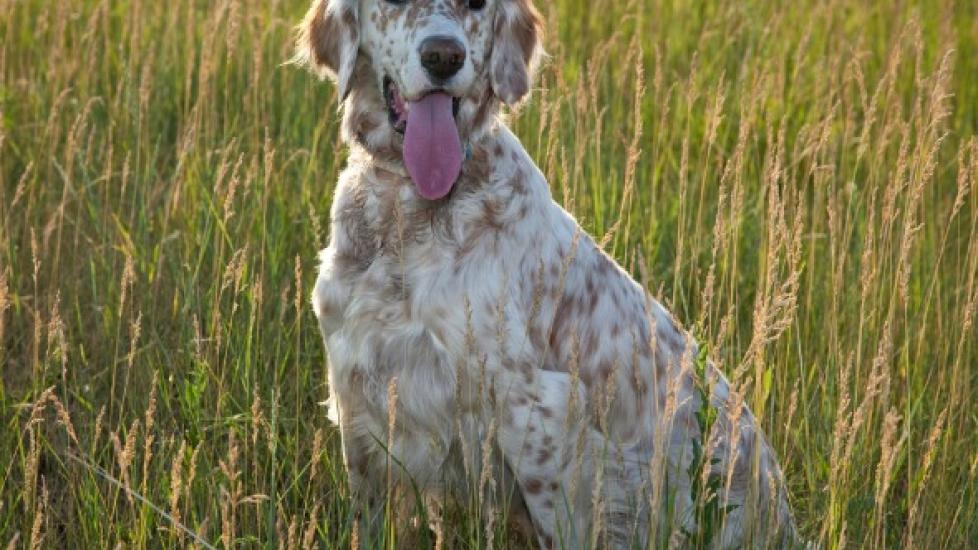Osteochondritis Dissecans (OCD) in Dogs
Excess Cartilage and Deficient Bone Growth in Dogs
Endochondral ossification is a normal bone growth process by which cartilage is replaced by bone in the early development of the fetus. Osteochondrosis is a pathological condition in which normal endochondral ossification, the metamorphoses of cartilage to bone, is disturbed. The disturbance is often due to a disruption in the blood supply to the bone. The result is retention of excessive cartilage at the site as the process of endochondral ossification is halted, but cartilage continues to grow. The end result is abnormally thick regions of cartilage that are less resistant to mechanical stress, as opposed to the stronger and denser bone.
Large and giant breeds, including great Danes, Labrador retrievers, Newfoundlands, rottweilers, Bernese mountain dogs, English setters, and old English sheepdogs are predisposed to this condition.
Symptoms and Types
- Lameness (most common symptom)
- Onset of lameness may be sudden or gradual, and may involve one or more limbs
- Lameness becomes worse after exercise
- Unable to bear weight on affected limb
- Swelling at joints
- Pain in limb, especially on manipulation of joints involved
- Wasting of muscles with chronic lameness
Causes
- Unknown
- Appears to be genetically acquired
- Disruption in supply of blood to the bone or through the bone
- Nutritional deficiencies
Diagnosis
You will need to give a thorough medical history of your dog's health, onset of symptoms, and any information you have about your dog's parentage. A complete blood profile will be conducted, including a chemical blood profile, a complete blood count, and a urinalysis. The results of these tests are often within normal ranges in affected animals, but they are necessary for preliminary assumptions of your dog's overall health condition.
Your veterinarian will examine your dog thoroughly, paying special attention to the limbs that are troubling your dog. Radiography imaging is the best tool for diagnosis of this problem; your veterinarian will take several x-rays of the affected joints and bones to best discern any abnormalities. The radiographs may show details of lesions and abnormalities related to this disease. Computed tomography (CT-scan) and magnetic resonance imaging (MRI) are also valuable diagnostic tools for visualizing the extent of any internal lesions.
Your veterinarian will also take samples of fluid from the affected joints (synovial fluid) to confirm involvement of the joint and to rule out an infectious disease that may be the actual cause of the lameness. More advanced diagnostic and therapeutic tools like arthroscopy may also be used. Arthroscopy is a minimally invasive surgical procedure which allows for examination and sometime treatment of damage inside the joint. This procedure is performed using an arthroscope, a type of endoscope inserted into the joint through a small incision.
Treatment
After establishing the diagnosis, your veterinarian will plan corrective surgery. Either arthroscopy or arthrotomy (surgical incision into the joint) techniques can be used to reach the area. Your veterinarian will presribe medicines to control pain and inflammation for a few days after surgery.
There are also some medicines that are available, and that are known to limit the cartilage damage and degeneration. Your doctor will explain your options to you based on the final diagnosis.
Living and Management
During recovery and healing, activity will need to be restricted and weight control measures undertaken to decrease stress on the affected joints. When taking your dog outdoors for walks, control the level of activity with a leash, making sure that your dog stays to a slow walk. Activity should be restricted for about 4-6 weeks, but early, active, therapeutic movement of the affected joints is encouraged for improved healing.
You should not allow your dog to run freely on concrete or hard surfaces. A yearly examination is necessary for preventing progression of degenerative joint disease. Balanced nutrition is also an important aspect of promoting rapid growth and keeping the weight under control and within normal range for your dog's breed, age and size. Weight control will also help in decreasing the load and stress on the affected joints.
The overall prognosis largely depends on the location and extent of the problem. In some cases, recovery and life quality is excellent, while in other cases, the quality of life is restricted. Keep in mind that due to genetic element of this disease, you will need to have your dog neutered or spayed to prevent it from breeding, as the condition is very likely to be passed along.
